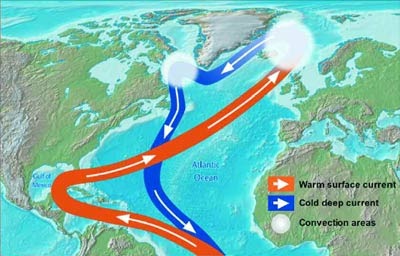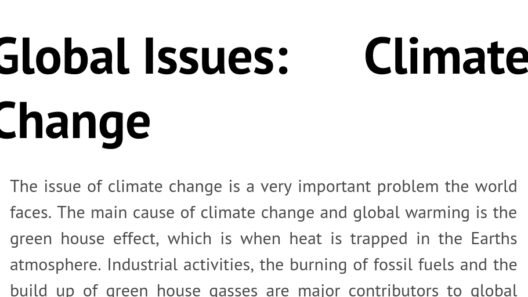The climate of Ireland, often referred to as the Emerald Isle, is characterized by its mild and moist weather. This unique climatic tapestry is woven from a combination of geographical, meteorological, and oceanic influences, which together culminate to create an environment that both attracts visitors and shapes the nation’s ecological identity.
One common observation about Ireland’s climate is its propensity for frequent rainfall. Many tourists remark on the unpredictability of the weather, observing that a sunny morning can swiftly transform into a drizzly afternoon. This phenomenon can be attributed to the country’s maritime climate, influenced heavily by the Atlantic Ocean. Due to its position at the confluence of warm and cool air currents, Ireland experiences relatively mild winters and cool summers. Such conditions foster a unique ecosystem replete with verdant landscapes, diverse flora, and a sense of serenity that captivates those who venture to its shores.
Inevitably, the first question that arises is: why is Ireland’s weather so variable? The answer lies in the complex interplay between oceanic influences, geographical positioning, and atmospheric conditions. Positioned in the North Atlantic, Ireland is buffeted by oceanic winds that carry moisture-laden air from the sea. The country’s topography, with its undulating hills and rugged coastlines, also plays a crucial role in shaping local weather patterns. As moist air ascends over these elevations, it cools and condenses, resulting in precipitation. Consequently, this climatic dance informs not only the landscape but also the agricultural practices and lifestyle of Irish inhabitants.
The average annual rainfall in Ireland is substantial, typically ranging from 750mm to over 1,000mm. This significant precipitation is not uniformly distributed. Coastal regions often receive more rain than those situated inland. For example, areas of western Ireland, such as Galway and Clare, record higher rainfall figures, while the eastern regions, such as Dublin, experience relatively drier weather. This disparity presents intriguing ecological niches, enabling a diverse range of plant and animal species to flourish.
The mild weather, with temperatures rarely reaching extremes, is another fascinating aspect of the Irish climate. Average temperatures in winter oscillate between 5°C and 8°C, making frost and snow relatively uncommon. Summers tend to be cool and temperate, with maximum temperatures typically hovering around 15°C to 20°C. This gentle climate not only creates a comfortable living environment for humans but also encourages a lush, green habitat teeming with life. Fields of verdant grass, ancient woodlands, and flourishing gardens are testament to the resilience and adaptability of flora in such an environment.
The climatic conditions of Ireland do not merely affect the natural landscape; they also influence cultural aspects, including the traditional Irish lifestyle. Farming practices, particularly in communities dependent on agriculture, are intricately linked to the rhythms of weather patterns. The consistent rainfall supports a robust dairy and cattle farming industry, essential components of Ireland’s economy. The lush pastures allow for grazing animals, which provide a plentiful supply of milk, cheese, and meat products, firmly embedding agriculture within the cultural identity of the nation.
However, the climate is not without its challenges. The moderate temperatures and moisture also create conditions conducive to the growth of certain pests and diseases, which can threaten both native plants and crops. Additionally, issues related to climate change loom large, as shifting weather patterns may influence the frequency and intensity of rainfall, leading to potential flooding or drought in certain regions. Such changes necessitate a growing awareness and response from both the government and the populace, emphasizing the need for sustainable practices and resilience in the face of climate variability.
There is an ever-growing fascination with Ireland’s climate that transcends mere meteorological data. Its profound impact on the landscape, lifestyle, and culture creates a nuanced understanding of what it means to live in harmony with nature. This awareness has filtered into various aspects of life, fostering a strong environmental consciousness among the people of Ireland.
Moreover, the climate has nurtured an appreciation for biodiversity. Conservation efforts across the island represent a concerted attempt to preserve habitats and species that thrive in the moist environment, from coastal ecosystems to forest habitats. The establishment of national parks and nature reserves underscores the commitment to protecting these vital areas, which are not only critical for ecological balance but also serve as a resource for research and education.
In summation, the climate of Ireland is more than a mere backdrop; it is a dynamic force that shapes every facet of life on the island. The interplay of mild and moist weather conditions fosters not only a lush and unique landscape but also cultivates cultural significance rooted in agrarian practices and environmental stewardship. As the global dialogue around climate change intensifies, the experience of living in such a climate – a delicate balance of beauty and challenge – becomes increasingly relevant. The Emerald Isle stands as a testament to the resilience of nature and humanity’s enduring connection to the environment.








